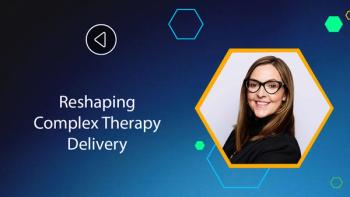
Take your PAL on all sales calls
It doesn't matter what you sell. Whether it's widgets or pharmaceuticals, we all face the same challenge - connecting with our customers and getting our message across.
It doesn't matter what you sell. Whether it's widgets or pharmaceuticals, we all face the same challenge - connecting with our customers and getting our message across. I've devised a simple way to do this: I never forget my PALâ¢: the Purpose, Audience and Logistics of every sales call. This is the same method I use when preparing for any kind of presentation - from a one-on-one meeting to a full-fledged "dog and pony show" with visual aids and product samples.
Most sales professionals know that when you give any type of presentation, you have to convey some value to the doctors and hospital staff, remembering to answer their unspoken question: "What's in it for me?" In this case, the me translates into others as well - their patients.
Purpose
The first point to remember is the "P." Always keep your Purpose in mind. Do you want to generate support for formulary approval, sell a new product to an existing customer, get a first order from a new customer or merely inform him or her about your services?
What do you want the doctors or other medical/healthcare professionals to know, feel or do when they leave your sales presentation? Without this clarity, typically nothing happens. With a specific end result in mind, you will be able to outline and develop your presentation more easily. Do you want the doctor to write two prescriptions that day? Schedule another meeting?
Being clear about the purpose of your sales call or sales presentation will help you prepare the right information to get your message across and keep you focused.
Audience
The "A" in PAL stands for Audience - the buying group or prospective buyers. Find out as much as you can about your audience members and the area in which they operate before preparing your presentation. Has this doctor's office used your product before? What has worked? What hasn't? Is there a certain time of day when he or she prefers to be seen? Does this person always like to receive protocol materials, samples or giveaways?
Even seasoned salespeople sometimes forget to do all their homework and wind up losing a sale. Many presentations include information that is either too far above or too far below the knowledge level of the audience.
Ask yourself: Who is in the audience? Are they prospective clients or do they represent repeat business? Why are they there? What are their demographics (Where are they from? What sort of patient base do they have? How old are they?)? What is their attitude toward your company and products? Maybe they specialize in a certain type of illness or medical technique. What knowledge do they have and what knowledge do they need? Relating the "right" information to the wrong audience limits your chance of achieving your objectives.
Where and when can you learn about your customers? Before the presentation, ask the right questions of the doctors, nurses and other medical staff. This type of advance preparation helps you customize the material and organize the content.
Whatever you do, make sure you are sensitive to your customers. Keep detailed records on their likes and dislikes, which medical journals they particularly respect, whom among their peers they admire, etc.
Another way to properly prepare for your customer is to arrive early before the sales presentation; observe and talk to people. This is a good opportunity to make last-minute changes. If the physician you planned on seeing is particularly backlogged that day, change course. Prioritize your detailing time accordingly.
Logistics
The "L" in PAL represents Logistics. Knowing the logistics of your sales call or meeting in advance can save you a lot of grief later. Are you part of a team scheduled to discuss products and services? What will the other pharmaceutical presentations be discussing? How large is the audience? What visual equipment is available? How much time do you have to present? What time of day will you be speaking? The answers to these questions are crucial in helping you tailor your sales call and presentation.
For larger presentations, if you will be using visual aids, be certain you have the proper equipment, including replacement bulbs, extra extension cords or anything else that might botch your presentation. If you will be going to a hospital, restaurant or doctor's office for the first time, you may want to make a pre-presentation visit to familiarize yourself with not only travel time, but the setup. Often a friendly receptionist will be able to show you the conference room or other setting where you will be making your presentation. Once you have determined your PAL, write your overall objective in one sentence or less. In other words, begin with the end in mind.
Be prepared for the unexpected. Be prepared to answer questions you may never have encountered before. Be prepared to be at your best. And don't forget your PAL.
With good preparation and practice, you will be prepared to distinguish yourself from the competition. PR
Newsletter
Lead with insight with the Pharmaceutical Executive newsletter, featuring strategic analysis, leadership trends, and market intelligence for biopharma decision-makers.




